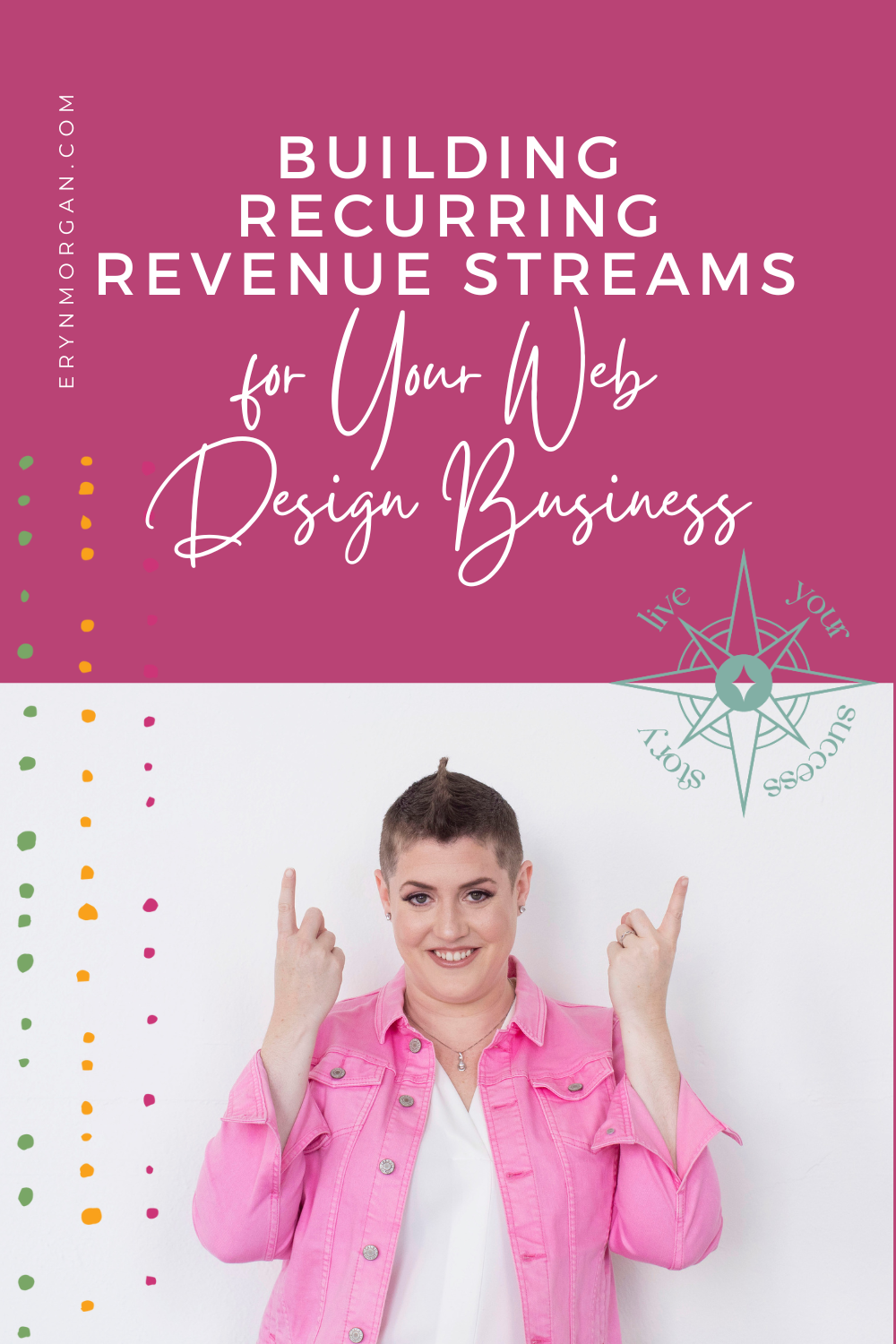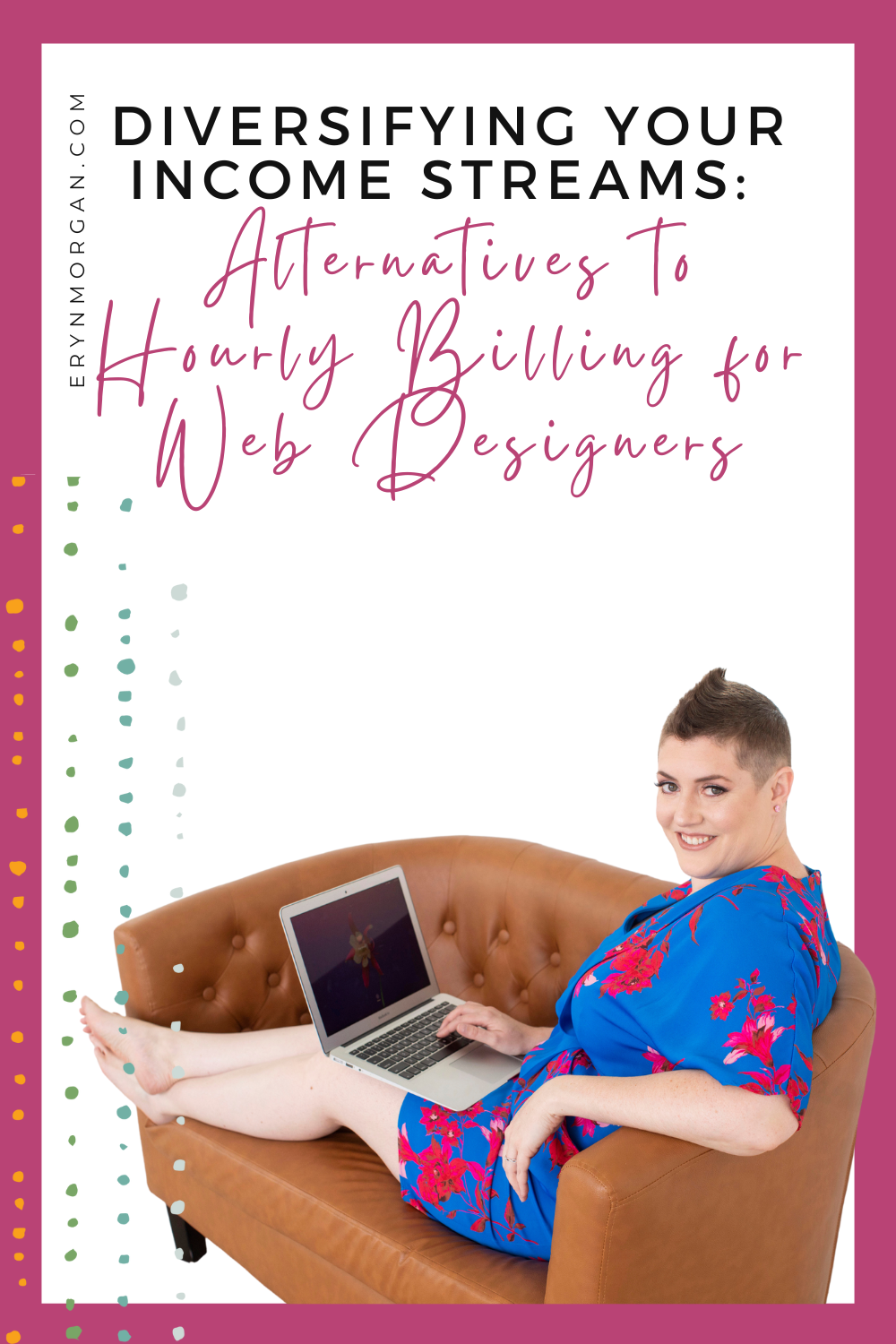You’ve done the work. Built the portfolio. Delivered the results. But your pricing?
That still feels like a moving target.
Maybe you’ve been tweaking your rates based on vibes. Maybe you’ve been copying what “seems reasonable” from other designers. Or maybe you’ve outgrown the hourly model but have no idea what comes next.
This is where your next level begins.
The Web Design Pricing Guide isn’t a pricing template. It’s a curated pathway to help you understand, refine, and own the pricing strategy that fuels your business—and your life.
Instead of cramming everything into one mega-post, I’ve broken down the journey into six strategic pillars. Each one links out to a deeper post that helps you implement, not just imagine, smarter pricing.
Let’s walk through the six most important pricing shifts for web designers ready to scale sustainably—and profitably.
How to Use This Web Design Pricing Guide (And Actually Apply It)
This guide isn’t something you skim and shelve.
It’s a living, breathing system designed to support real-world decisions.
Use this Web Design Pricing Guide when:
- You’re rebuilding your offer suite
- You’re tired of working more to earn more
- You want to stop ghosting proposals because you’re second-guessing the price
- You’re ready to stop pretending pricing is “just a number”
Each post in this series tackles one core challenge that might be silently costing you clients, clarity, or cash.
So skim through and visit the post that resonates with where you’re struggling the most right now. Take what you need—and come back when you hit the next ceiling.
1. Stop Billing by the Hour—and Start Scaling With Intention
Hourly pricing feels fair—at first. It’s clean, it’s clear, and it makes sense when you’re just getting started. You show up, do the work, log the time, and send the invoice.
Simple.
Until it isn’t.
Because the better you get at what you do—the more efficient, strategic, and intuitive—the less that equation serves you. Suddenly, every improvement in speed eats away at your income. Every scope shift becomes a tug-of-war over hours and estimates.
Every proposal turns into a math exercise instead of a conversation about outcomes. And you start to realize that you’re not building a business—you’re running a time clock.
That’s the trap of hourly billing. It penalizes excellence. It invites scope creep. And it puts you in a position where the only way to grow your revenue is to give up more hours—hours you don’t actually want to sell.
In Alternatives to Hourly Billing for Web Designers, we walk through six real-world pricing models that shift you from labor to leverage. These aren’t hypothetical theories—they’re the exact structures my clients use to create recurring revenue, productized offers, and high-impact intensives that serve their audience and their lifestyle.
If you’ve ever thought, “I can’t possibly raise my hourly rate any higher,” or “Why am I still chasing invoices for work that already happened?”, this is your permission slip to change the model entirely.
Scaling your income shouldn’t mean scaling your exhaustion. Start here with this web design pricing guide—and start building a pricing system that pays you for your brilliance, not just your time.
2. Build a Pricing Strategy That Reflects Your Business Model
There’s a moment in every web designer’s journey when the pricing puzzle stops being about numbers—and starts being about alignment. Because even if you’re charging “industry standard” rates, if those rates aren’t rooted in your goals, your workflow, and your real-life needs, they’ll eventually break under pressure.
You can’t scale with someone else’s formula. Not when your delivery style is different. Your ideal client is different. Your vision for your life and business?
That’s different, too.
In Pricing Strategies for Web Designers, I walk you through how to reverse-engineer your rates from the ground up—starting with your actual income goals, ideal client count, and the business model that makes sense for you. We’ll map out your offer suite with intention, clarify where each offer fits in your client journey, and bake boundaries right into the structure.
This isn’t about “charging premium” just because that’s the current trend. It’s about designing offers that help you hit your financial targets without burning out your calendar—or your creative energy.
If you’ve ever thought, “There’s no way I can raise my prices and still get yeses,” or “I don’t even know what I should be charging,” this is where you start. Your pricing strategy should feel like a steady foundation—not a house of cards. This post shows you how to build it right.
3. Sell Smarter With Pricing Psychology
Selling doesn’t have to mean convincing. But it does require connection—and that connection hinges on one crucial thing: understanding how people make decisions.
When someone is thinking about hiring you, they’re not just crunching numbers. They’re weighing uncertainty, envisioning outcomes, managing fears, and hoping that this investment will finally get them where they want to go.
In that moment, your ability to communicate value with clarity and confidence can tip the scale entirely.
Here’s where pricing psychology becomes your secret weapon—not to manipulate, but to guide. It’s about helping clients feel safe, certain, and seen.
Pricing Psychology for Web Designers walks you through:
- How to use anchoring to frame your premium offer first—so the rest feel accessible by comparison.
- Why reframing your services as investments (not expenses) instantly shifts perception and increases buy-in.
- How to surface and speak to emotional objections that often go unspoken—but derail the sale if left unaddressed.
If you’ve ever left a discovery call thinking, “They seemed excited… what happened?”—this is the post you need.
When you understand how your client thinks, you don’t have to second-guess your price.
You just lead with intention—and let trust do the heavy lifting.
4. Add Recurring Revenue (So You Can Breathe Between Projects)
If your income resets to zero every month, you’re not running a business—you’re running a sprint that never ends.
And while that rush might feel thrilling at first, it’s also what keeps you up at night wondering how you’ll fill next month’s calendar.
The highs are high, but the lows?
They’re exhausting.
Recurring revenue changes everything. Instead of starting from scratch every 30 days, you build from a foundation that’s already working.
That might look like retainer packages, monthly care plans, or ongoing strategic support that keeps your clients thriving—and your income steady.
When you introduce even a modest layer of recurring revenue, you create space. Space to rest between launches, say no to misaligned projects, and to actually build your business instead of constantly chasing the next invoice.
Recurring Revenue for Web Agencies dives deep into exactly how to design these offers, price them well, and sell them to clients who are genuinely grateful to have you on call.
When you start each month with money already on the books, you stop playing defense—and start building momentum on your terms.
Income consistency isn’t just nice. It’s the safety net, the stability, and the strategy your business deserves.
5. Price for Profit—Not Just Paychecks
You can be booked solid and still feel broke. You can hit six figures in revenue and still feel like you’re drowning. Because profit isn’t just what you make—it’s what you keep.
Too many web designers find themselves stuck in that awkward space between success on paper and exhaustion in real life.
Maybe you’re doing incredible work, getting referrals, and booking clients—but the math still doesn’t make sense. You wonder where the money’s going.
You’re paying your tools, your taxes, and your team, and somehow… your paycheck feels like the last piece of the puzzle, not the first. That’s not a pricing problem.
That’s a profit system breakdown.
In Web Design Pricing for Profit, we go beyond “charge more” and dive into the actual levers that increase your financial breathing room:
Calculating your real break-even point—so you know exactly what your offers need to earn, not guess what “sounds good.”
Shifting from deliverables to outcomes—so you stop pricing like a technician and start leading like a strategist.
Structuring offer tiers that serve your clients and protect your margins—without scope creep swallowing your Saturdays.
If you’re ready to feel clear, confident, and in control of your income, this post will show you how. Because pricing for profit isn’t just about building a better business—it’s about building a better life.
6. Increase Profit Without Adding Another Client
Here’s the truth: not every profit problem needs a sexy new offer.
Sometimes, it’s about finding the quiet leaks—those sneaky places where your time slips away, where systems are half-working, where admin tasks pile up and deliverables drift out of scope.
You could be doing brilliant design work. You could even be charging appropriately.
But if your backend is chaos?
If you’re reinventing the wheel every time a client signs on?
If your brain is juggling a dozen delivery timelines with no clear process to support you?
Then profitability will always feel just out of reach.
Boosting Your Bottom Line walks you through the unsexy—but wildly profitable—shifts that create breathing room:
- Trimming unnecessary expenses without stripping your client experience
- Designing delivery systems that support you as much as they support your clients
- Creating smart leverage points in your workflow so you stop doing $25/hour tasks when you’re trying to build a $250/hour business
When you shore up the internal foundation of your business, profit becomes the natural outcome—not the uphill battle. This post will show you where to look, what to tweak, and how to reclaim the margin you didn’t even realize you were losing.
What Happens When You Get This Right
Suddenly, the proposal process doesn’t feel like a panic spiral. That blank pricing field? It doesn’t stop you in your tracks anymore. The budget question? It’s not a trap—it’s an opening.
Instead of bracing for pushback, you walk into sales conversations grounded. There’s clarity in your voice, calm in your process, and confidence behind every number you share.
Discovery calls shift. You’re not chasing anyone. You’re choosing who to partner with—because your offers are aligned, your positioning is clear, and your value is unmistakable.
And when a client says yes, they say it faster. With fewer questions. Less haggling. More trust.
That’s what the right pricing system does. It clears the static. It quiets the doubt. It helps you build a business that fits your capacity, fuels your goals, and funds your freedom.
What I Can Help You With—Right Now
Book a free discovery session.
Whether you need to raise your rates, rework your offer stack, or stabilize your income, I’ll help you sort through the noise, clarify your next steps, and make a plan that actually fits your goals—and your capacity.
You’ve already done the hard work of getting great at your craft. Now let’s make your pricing reflect it.
Let’s build a business that’s profitable—by design using this web design pricing guide.


